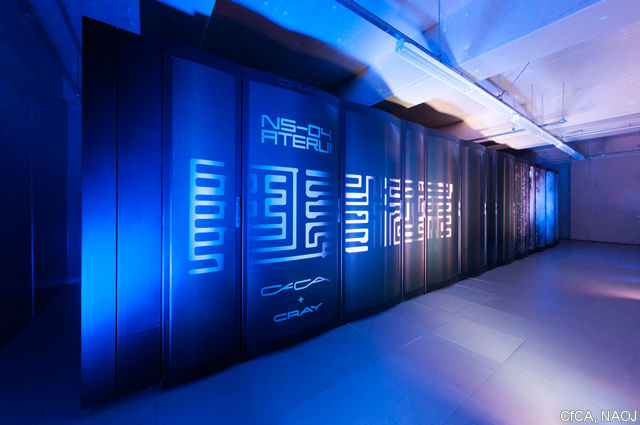Objective
Objective
In the formation of the natural world, there are still big questions such as the birth of the universe and the basic laws of elementary particles related to it, the structure of the nucleus, and where and how the elements were created. It is often thought that the main role of this inquiry is large-scale experiments and observations, but as described below, simulation plays an important role in interpreting the results of experiments and observations and developing science. In this project, we will promote the following 6 research themes, which are expected to yield outstanding results in Japan, among the many researches underway in the world.
B Meson Decay
Some of the B meson decays measured in the SuperKEKB/Belle II experiment provide experimental data suggesting a deviation from the elementary particle standard model. The truth and truth should become clear as the data accumulates, but what is needed at the same time is an accurate understanding of the contribution of quantum chromodynamics (QCD) to B-meson decay. The form factor of B-meson decay, especially B→πℓν decay, is precisely calculated by lattice QCD simulation, and combined with the experimental results, the physical law beyond the elementary particle standard model is restricted.
QCD Phase Structure
The vacuum of QCD, which is said to be in the high temperature phase in the early universe, shifts to the low temperature phase by the phase transition, and is the origin of the mass of the substance. The details of the phase transition are dominated by the symmetry of the system, but the symmetry of the QCD becomes unclear due to quantum anomalies, so the phase structure is not fully understood. A simulation that maintains chiral symmetry establishes the phase structure of the 2+1 flavor QCD.
Baryon Forces
The force acting between baryons such as protons and neutrons, the baryon force should be the basis for understanding the nucleus, but it is itself produced as a result of the complex interaction of quarks by QCD. Then, the lattice QCD simulation is necessary for the calculation. Especially, the hyperon force between baryons containing strange quarks, which has little experimental information, can only be determined by lattice QCD calculation. We will clarify the existence of two unknown baryon states by calculating hyperon force and baryon force including heavier charm quarks, which will lead to hypernuclear experiments at J-PARC and heavy ion collision experiments at LHC.
Nuclear Structure and R−Process
A major challenge is to advance the study of nuclear structure to neutron-rich nuclei and to quantitatively understand the r process of heavy element synthesis. Applying the Monte Carlo shell model technique cultivated up to now, we will proceed with the structural calculation of nickel (atomic number 28) isotopes to the region near the mass number 68 to 78 and further to the region where the mass number exceeds 100. Improves reliability by comparing with RIBF experimental results and quantitatively reveals the main part of r process.
Neutron Star Mergers
A large amount of neutrons are required for the r-process which is a mechanism of heavy element synthesis. Neutron star mergers are the most promising astrophysical site of the r-process, as suggested by the observations of electromagnetic counterparts to the gravitational-wave event GW170817. We plan to perform advanced simulations of neutron star mergers to clarify the properties of materials ejected in the merger. The results obtained will be utilized in observations of gravitational waves by the interferometers such as KAGRA as well as of electromagnetic signals in particular by optical telescopes.
Creation of the Space-Time
The Big Bang is said to be the beginning of the universe, but its first mechanism has not been clarified, and inflationary cosmology is only a phenomenological theory. Starting from superstring theory, which is expected as a theory that explains everything, we will clarify in a simulation how spacetime is generated and grows from nothing.
Implementation period: April 2020 to March 2023
Representative organizaions: High Energy Accelerator Research Organization
R&D Head: Shoji Hashimoto (Professor, Institute of Particle and Nuclear Studies, High Energy Accelerator Research Organization)
